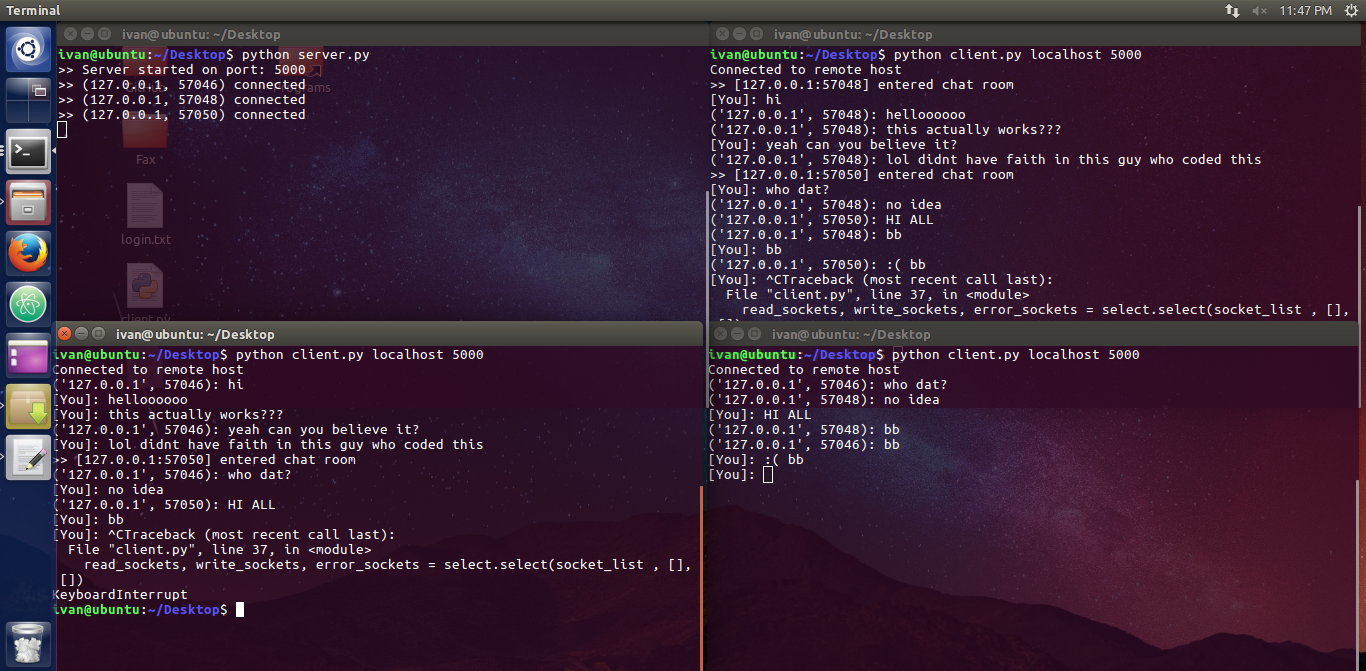

This means that every time a client connects, the handler for it will run on a new thread. The server we are using here is a class extending both TCPServer and ThreadingMixIn.Print(f'The capitalization server is running.') With ThreadedTCPServer(('', 59898), CapitalizeHandler) as server: # date before the server will be able to handle another client.Ĭlass DateHandler(socketserver.StreamRequestHandler): Beware though that a client has to be completely served its When a client connects, it sends the client the current

After closing the connection, the server goes back to waiting for the next client.ĭate_server.py # A simple TCP server. The with statement ensures that the connection is automatically closed at the end of the block. When a client connects, the server sends the current datetime to the client. This is perhaps the simplest possible server. A multi-user chat application, in which a server must broadcast messages to all of its clients.A two-player tic tac toe game, illustrating a server that needs to keep track of the state of a game, and inform each client of it, so they can each update their own displays.A capitalize server and client, illustrating two-way communication, and server-side threads to more efficiently handle multiple connections simultaneously.The server sends data to the client only. A trivial date server and client, illustrating simple one-way communication.We will look at four network applications, all running over TCP using sockets, written completely from scratch in Python, presented in order of increasing complexity: CODE language-jsx keep-markup - var app = require('express')() var http = require('http').createServer(app) const PORT = 8080 http.To gain proficiency in writing client-server applications in Python at the socket level. Inside server.js place the following code:


 0 kommentar(er)
0 kommentar(er)
